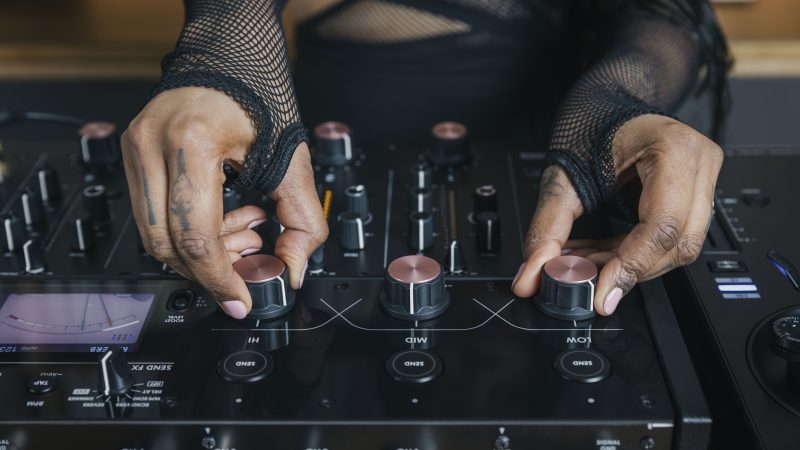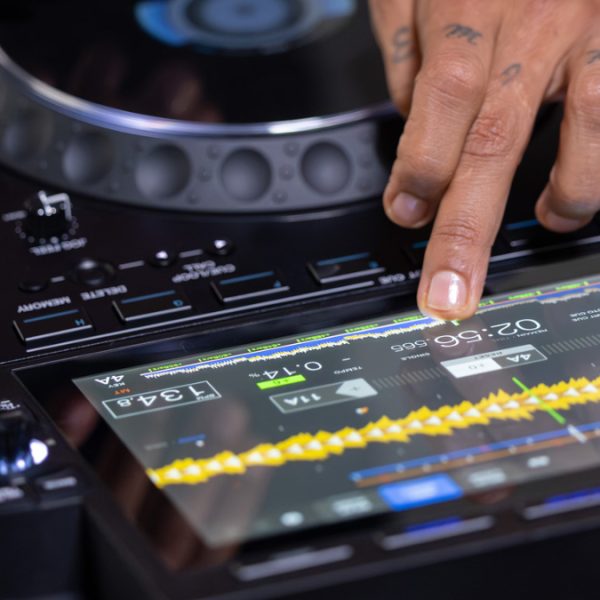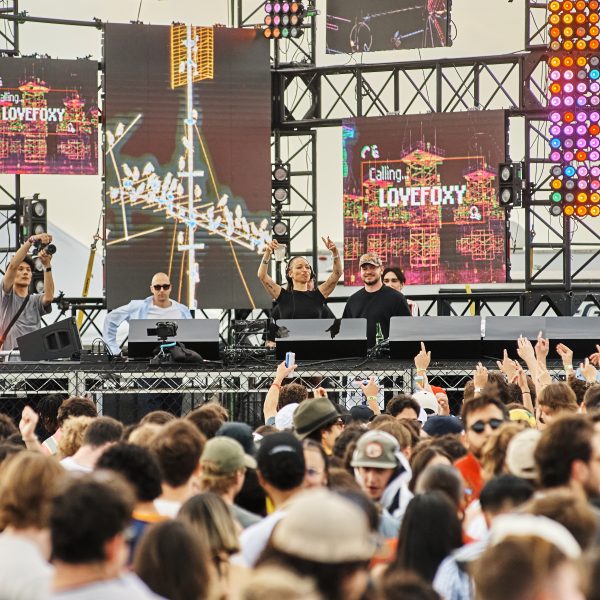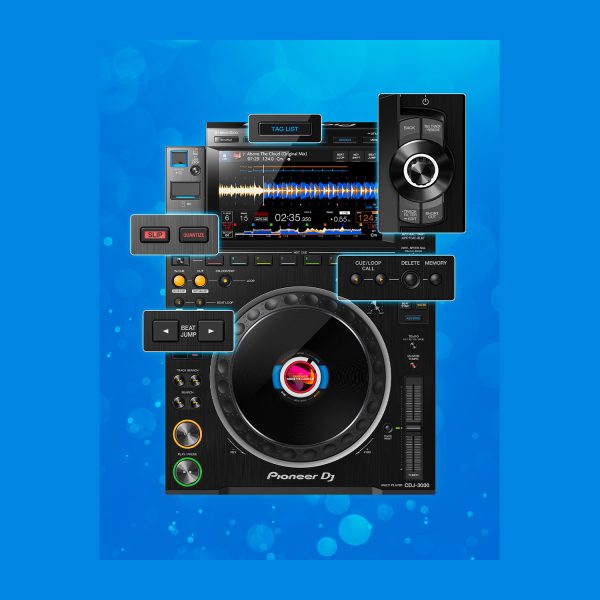Drum & bass / garage / dubstep
Drum & bass, UK garage, dubstep, and the wider “bass music” world mostly trace back to soundsystem culture, although each has its own distinct tempo range and groove logic. The craft in this lineage, which has its roots in Jamaica and was refined for decades in the UK, is about rolling energy and big moments. DJs in this lane are versed in the cultural cues of soundsystem culture, using spinbacks to round out a mix, and wheelups, where the DJ spins back the track and starts it over in response to a big crowd reaction.
Drum & bass is engineered for speed and impact. Most contemporary tracks sit in the 170 to 180 BPM range, which encourages decisive transitions of 8 or 16 bars rather than extended mixes. The signature drum & bass move is the double-drop: aligning two tunes so the drops hit simultaneously, creating a single, explosive peak. FX like echo-outs and filters at this tempo range tend to work best when used quickly and intentionally, keeping the momentum nice and taut. Drum & bass sets often feature an MC, who shapes the energy, bridges sections, and adds call-and-responses with the crowd. DJs may give MCs space to toast / rap over drum-led sections. Culturally, drum & bass is a scene that values technical mastery and DJs with stage presence and energy.
UK garage usually sits between 130 and 140 BPM and is characterised by shuffle and swing, which means skipping kicks, syncopated snares and hi-hats, and either the 4/4 “speed garage” bump or the more irregular 2-step pattern. Sets in the smoother end of UKG could feel akin to house DJing, while down the other end of the scale, a DJ like EZ is closer to open-format technical wizardary. Because so much UKG features big hooks and vocals, DJs pay attention to song structure and clashing keys; layering two choruses, for instance, is almost always a no-go. Modern tools like Hot / Memory Cues, Beat Jumps and loops can help DJs in this respect, which requires some preparation and familiarity with the music in your crate. Like drum & bass, FX tend to work best in UKG when they’re used judiciously to mark transitions but there are always exceptions to the rule. Spinbacks and wheelups are perennial favourites.
Dubstep sits around 140 BPM but with the kick and snare hits so wide apart, it often feels more like 70 BPM. Classic dubstep combines meditative moods with hefty bass-weight and drops, while the later dubstep offshoot styles popularised in the US pile on more vocals, synths, and energy. No matter the style, tracks are arranged around drops, and in the DJ booth the goal is to make those drops land with maximum weight, with bold, decisive transitions. DJs usually keep the mix uncluttered, giving the bass space to breathe, and rarely ride a mix for too long. Beatless intros, which are common in dubstep, are used to build tension and clear space. Like with garage and drum & bass, FX add flourishes to the ever-rolling rhythms rather than reshaping the tracks. Similarly, rewinds / wheelups and spin backs are part of the culture, and a DJ needs a keen sense of when the crowd deems a rewind has been earned.




